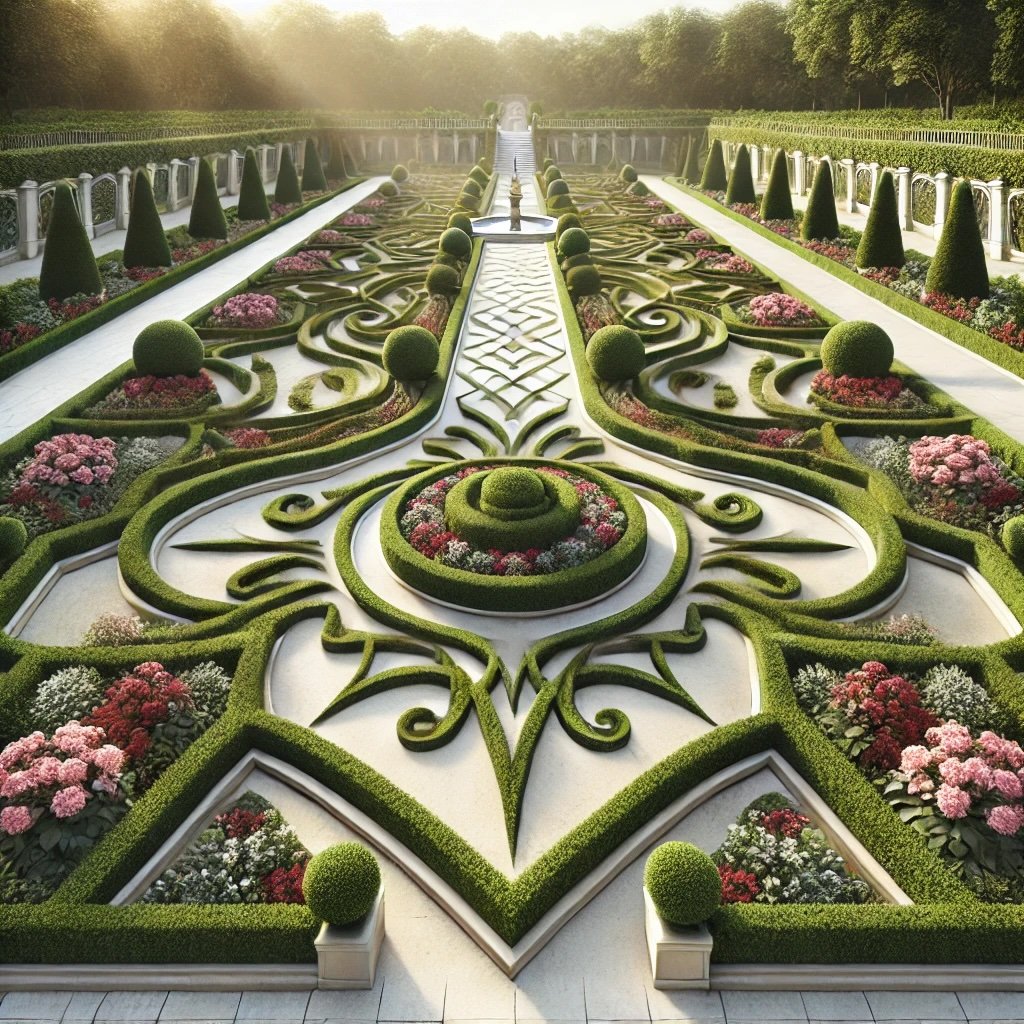The Anatomy of a Parterre Garden
The Anatomy of a Parterre Garden Parterre gardens, often called the epitome of formal garden design, are known for their stunning geometric patterns and meticulous attention to detail. Whether you're planning to create one or appreciate its beauty, understanding the anatomy of a Parterre garden can deepen your appreciation for this timeless landscaping style.
The Foundation: Symmetry and Geometry
At the heart of every Parterre garden lies its symmetrical design. Symmetry is crucial because it creates a sense of balance and harmony, critical elements in formal gardens. The geometry of a Parterre garden typically includes shapes like squares, rectangles, circles, and more complex forms like fleur-de-lis. These shapes are carefully laid out to be mirrored on either side of a central axis or focal point.
Central Axis
Central Axis: This is often a path or a line of sight that divides the garden into two equal halves, each mirroring the other. This axis can be aligned with a building, a statue, or a fountain, drawing the eye naturally through the garden. Focal Points: Statues, fountains, or topiaries are often placed at the intersection of paths or the center of a pattern, serving as a visual anchor for the garden.
Low Hedges: The Structural Framework
Low hedges typically outline the shapes in a Parterre garden, providing the structure and definition necessary to create sharp, geometric forms. These hedges are usually evergreen, ensuring the garden maintains its form throughout the year.
Common Plants: Boxwood (Buxus sempervirens) is the most traditional choice due to its dense foliage and ability to be tightly clipped. Other options include yew (Taxus baccata) and lavender (Lavandula spp.), which can add fragrance and color to the garden. Maintenance: The hedges require regular trimming to maintain their shape. This is usually done multiple times a year, depending on the plant species and the desired precision of the shapes.
Infills: The Color and Texture Palette
The spaces within the hedges, known as infills, are where a Parterre garden's creativity truly shines. These areas are often filled with a mix of flowering plants, gravel, or colored earth, creating a tapestry of color and texture that contrasts with the green hedges.
Flowering Plants: Traditionally, low-growing, colorful flowers like begonias, petunias, or geraniums are used. These plants are chosen for their beauty and ability to be massed together to create a unified visual effect. Gravel and Colored Earth: In some historic gardens, the infills are made from gravel or crushed stone, often in contrasting colors like white, red, or black. This minimalist approach emphasizes the geometric design and can reduce maintenance needs. Seasonal Rotation: Many Parterre gardens use seasonal flowers in the infills, allowing the garden's color palette to change throughout the year, keeping it vibrant and dynamic.
Paths: Guiding the Experience
Paths are an integral part of a Parterre garden's anatomy, guiding visitors through the space and providing access to its features. They are usually made from gravel, stone, or brick, complementing the garden's formal aesthetic.
Materials: Gravel is the most common material due to its permeability and classic appearance. Stone and brick paths can also be used in more formal or historic settings. Maintenance: Paths need to be regularly raked or swept to maintain their appearance and prevent weed growth, which can disrupt the design's clean lines.
The Role of Water Features and Statues
Many Parterre gardens feature water elements like fountains or ornaments such as statues and urns. These elements are strategically placed to add focal points and to enhance the garden's symmetry and formality.
Fountains: Water features often serve as the central focal point, adding a sense of tranquility and reflecting the surrounding plants and sky. Statues and Urns: Classical statues, urns, and other ornaments add historical context and artistic interest, often placed at key intersections or along the central axis.
Seasonal Considerations and Climate Adaptations
While Parterre gardens originated in temperate climates, they can be adapted to various environments by selecting appropriate plant species and considering seasonal changes.
Winter Interest: In regions with harsh winters, evergreen plants in the hedges ensure the garden maintains its structure and appeal even when flowers are not blooming. Drought Tolerance: In drier climates, consider using drought-resistant plants like lavender or rosemary in the hedges and infills, and opt for gravel paths to reduce water usage. Conclusion The anatomy of a Parterre garden is a harmonious blend of symmetry, geometry, and artistry, creating a visually stunning space deeply rooted in tradition. By understanding the critical elements of a Parterre garden—symmetry, low hedges, colorful infills, carefully designed paths, and ornamental features—you can better appreciate the skill and creativity of creating and maintaining these timeless landscapes.
Whether you're considering creating your own Parterre garden or enjoying the beauty of formal gardens, this knowledge can enhance your experience and perhaps even inspire you to embark on your landscaping project.
Further Reading on Parterre Gardens
Choosing the Right Plants for Your Parterre Garden: Learn how to select the best plants for your Parterre garden, including evergreen hedges, colorful infills, and seasonal options for year-round beauty.
Step-by-Step Guide to Creating a Parterre Garden: Follow our comprehensive guide to design, build, and maintain your own Parterre garden, from the planning phase to the finished masterpiece.
Adapting Parterre Gardens for Modern Living: Discover how to adapt the classic Parterre garden style to small spaces, urban settings, and eco-friendly landscapes with modern design elements.
Maintaining the Elegance: Care and Upkeep of Parterre Gardens: Master the art of maintaining your Parterre garden with expert tips on pruning, watering, and seasonal care to keep it looking stunning year-round.
Parterre Gardens Around the World: Take a visual tour of Parterre gardens across the globe, exploring how different cultures have adapted this elegant garden style to their local environments.







